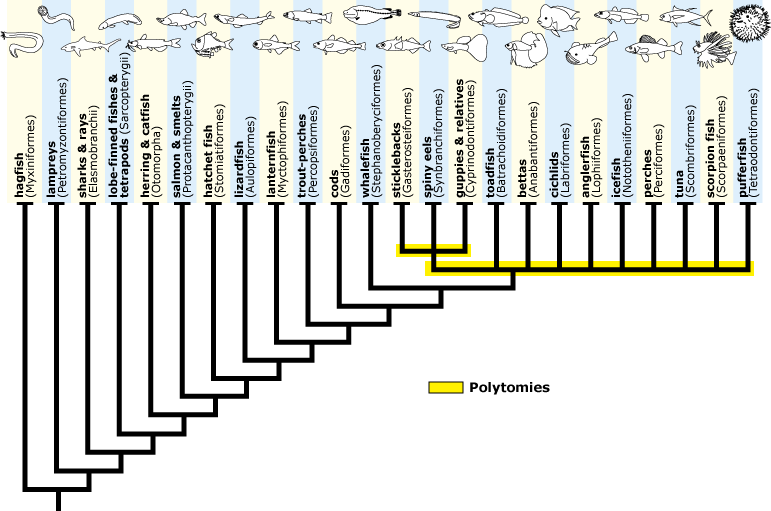The section of the tree that denotes the Percomorph (PER-koh-morf) clade looks different than the other parts. Instead of a simple branching pattern, it has a pitchfork shape. This feature of a phylogeny is called a polytomy. Most nodes on a phylogeny have two descendent lineages, but polytomies have more than two descendent lineages — in this case, nine descendent lineages are shown! What does this polytomy indicate about the relationships among these lineages?
In most cases, a polytomy means that we do not yet have enough evidence to support strongly one possible set of relationships over other possibilities. The polytomy shown here actually includes two polytomies and indicates that we can be fairly certain that sticklebacks, spiny eels, and guppies are closely related to one another, but that we don’t know which group is the next most closely related to them. Could be tuna. Could be pufferfish. It could be that the icefish and perches are each others’ closest relatives; it could be that icefish and bettas are. We’re just not sure. The orders of fishes included within Percomorphacea (PER-koh-mor-FAY-see-uh) are described as being incertae sedis, which is Latin for “of uncertain placement.” This is a term used by scientists to make clear that the group in question needs further study before we can form a strong hypothesis about their relationships.


